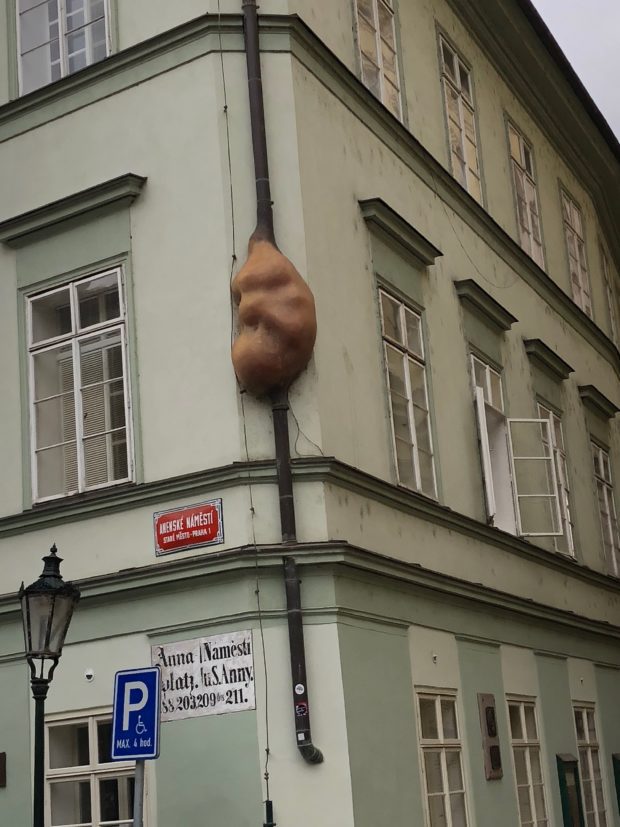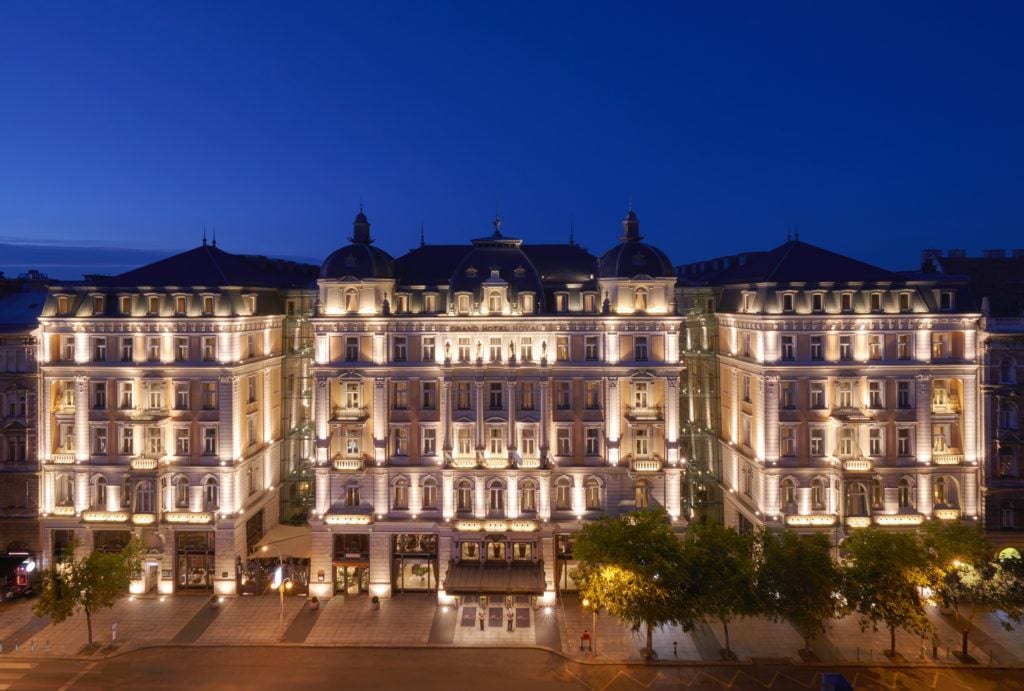
Eastern Europe is loaded with must-see cities, and on this adventure, I managed to visit two of the largest, Prague and Budapest. WithCorinthia Hotelsas home base in both cities, I set out to explore the cities on my own. I consider myself a traveler, not a tourist, so rather than turn to the usual guidebooks to do the cliché touristy things, I turned to The Corinthia Insider, the brand’s own city guides located on the hotel’s website.The Corinthia Insidergives unique insights into discovering and exploring the host city through the experiences of local experts and bloggers. Part of the spirit of these guides is to make guests feel that they are at home in the city, doing what everyday people do when they have time to relax and explore.
Prague, also known as “The City of A Thousand Spires”, is the capital and largest city of the Czech Republic. The city is home to 1.3 million people, hosts over 7 million visitors a year, with 6 million of them coming from outside the country.

TheCorinthia Hotel Prague, also known as the Corinthia Towers, is a prime business hotel situated on top of one of Prague’s hills in the Nusle District with panoramic views of the city. The 26-floor high rise was built in 1988, has 539 rooms, the Apollo Day Spa and my favorite part of the hotel, with its indoor pool on the 26th floor. It’s worth the upgrade to the club level for the extras and daily spread, as well as the views, especially at sunset. The hotel lobby has been newly renovated, making Lounge 62 a popular spot for casual dining throughout the day, afternoon tea or cocktails. Fine dining is available at The Grill and Far East Cuisine at the Rickshaw, a signature restaurant in both Prague and Budapest; or Let’s Eat, the hotel’s daily restaurant. The hotel is conveniently located across the street from the Prague Congress Center and from the VyÅ¡ehrad Metro station, which makes it easy to get into the center of Prague in minutes.

Prague is a city where tradition meets modern, and while many visitors focus on the classic attractions, the Corinthi a Insider led me to unusual things to do in Prague, as well as unusual Prague sculptures.
David Černý is one of the most influential sculptors in the Czech Republic, known for his creative and often controversial large-scale installations. The artist has located a number of his works around Prague, which is his hometown, and I had the opportunity to view five of them. One of his latest works is Metal morphos is a kinetic sculpture of author Franz Kafka’s head, made of several continuously rotating metallic layers. Another is called Piss, a 2004 sculpture outside of the Franz Kafka Museum in Malá Strana, which features two mechanical men moving realistically while urinating on a map of the Czech Republic.

A third eccentric Černý piece is Upside Down Horse depicting the country’s patron saint, Wenceslas, sitting astride an upside-down dead steed. You can find it hanging in Prague’s Lucerne shopping centre. No fear of falling, because the sculpture is made of Styrofoam.

ÄŒerný’s fourth instalment is located in the German Embassy. Here, the viewer peers through the garden gates of a children’s playground in an unusual tribute to the more than 4,000 East Germans who stationed themselves on this spot while awaiting political asylum and the freedom to travel back to Germany. The work includes a bronze Trabant, a typical car at the time, which many Germans were forced to leave behind, standing on two pairs of legs.
One of Černý’s lesser-known public art works in Prague is entitled “Embryo”. The pink blob hangs on a drainpipe on the façade of the Divadlo Na Zábradlí theater. Installed on December 9, 2008, the piece was placed there to mark the 50th anniversary of the theater. At night, via an internal light, it glows.

On the architectural side, the Insider recommended a number of unique sights, such as the Dancing House. The unusual building site, overlooking the Vltava River, was built in the 1990s by Czech and American architects Vlado Miluni and Frank Gehry. The location is also known as the Fred and Ginger Building, after the legendary dance duo, because the design makes it look as though the buildings are dancing together.
Two other architectural marvels I personally loved were the Tower of Books hidden in the Public Library, and the top of the stairwell at the Cubist Museum. There is also a famous wall in Prague’s Velkopřevorské Náměstí square that became a symbol of communist rebellion in the 1980s. Following the death of John Lennon, a large image of the musician was painted on the wall. It became a tribute to The Beatles singer as well as a representation of peace, love and freedom.

While viewing Prague’s many offerings, remember that Czech food and drink is also worth sampling. The country may be known for its beer, but don’t miss out on tasting wines from the growing regions of Bohemia or Moravia in the popular Vinograf wine bars, and if time allows, there are many interesting food tours to be experienced.
BUDAPEST
The “Pearl of the Danube” is actually two cities in one. Linked by the iconic19th century Chain Bridge across the rolling Danube River, Buda and Pest offer multiple opportunities for incredible cultural discovery.

The Corinthia Hotel Budapestis an historic hotel opened in 1896 as the Grand Hotel Royal, which was built for visitors of the Millennium Exhibition as a hub for the elite of 19th century society. The hotelhadundergone extensive modification throughout the 20th century and was restored and reopened in the 21st century as the Corinthia.

The hotel has four restaurants, 1 bar and 1 music club including Rickshaw, Brasserie and Atrium serving international and Hungarian dishes, Bock Bistro for Hungarian-inspired dishes fused with Spanish tapas, and Caviar; Bull from celebrity chef Marvi Gauci serving Maltese cuisine. Upgrading for access to the Executive Club is recommended. The RoyalSpa has been recently re-furbished with a dedicated fitness room, saunas, steam bath and Jacuzzi, relaxation areas, a 15-meter swimming pool, and an extensive menu of ESPA treatments.
This town is actually easy to get around on public transportation. I managed to ride trams to the main square, around the Hungarian Parliament Building and to the Castle District. The Corinthia Insider suggests Alternative Sightseeing Tours such as renting an old Trabant car, taking a Segway tour, or exploring by boat.

The other must do’s are a stroll across the Chain Bridge with a ride up the Castle Hill Funicular to the historic UNESCO Castle District. There are also an untold number of restaurants serving up traditional takes on Hungarian cuisine, with an equal number of cafes serving rich cakes, crepes and tortes.

A trip to Budapest wouldn’t be the same without a visit to one of the famous baths. I ventured to the 105 year-old Neo-Baroque Széchenyi Thermal Bath which is one of the largest bath complexes in the country with 18 pools, saunas, and a gym. Its water is supplied by two thermal springs full of nutrients, where over 100 million people have bathed. Genders mix at the facility, so bathing suits are mandatory!

Surprisingly, there are more monuments and museums in Budapest than baths and historic castles. The Insider suggests some Alternative Museums which feature contemporary art from international artists as well as Hungarian masters, yet no work is over 50 years old; The House of Terror, which is the former headquarters of the Hungarian secret police; and the Semmelweis Medical Museum which recreates early antiseptic procedures.

